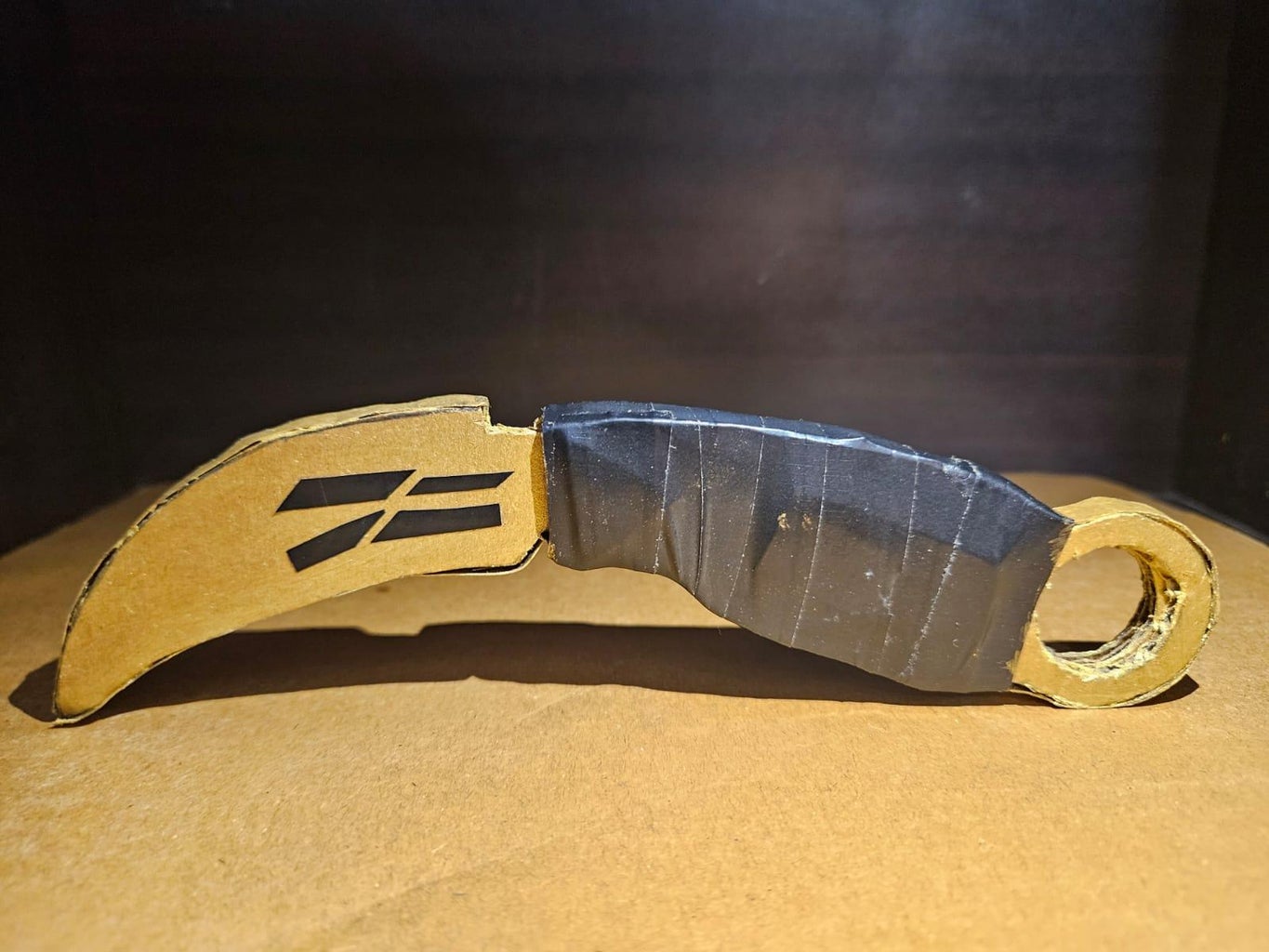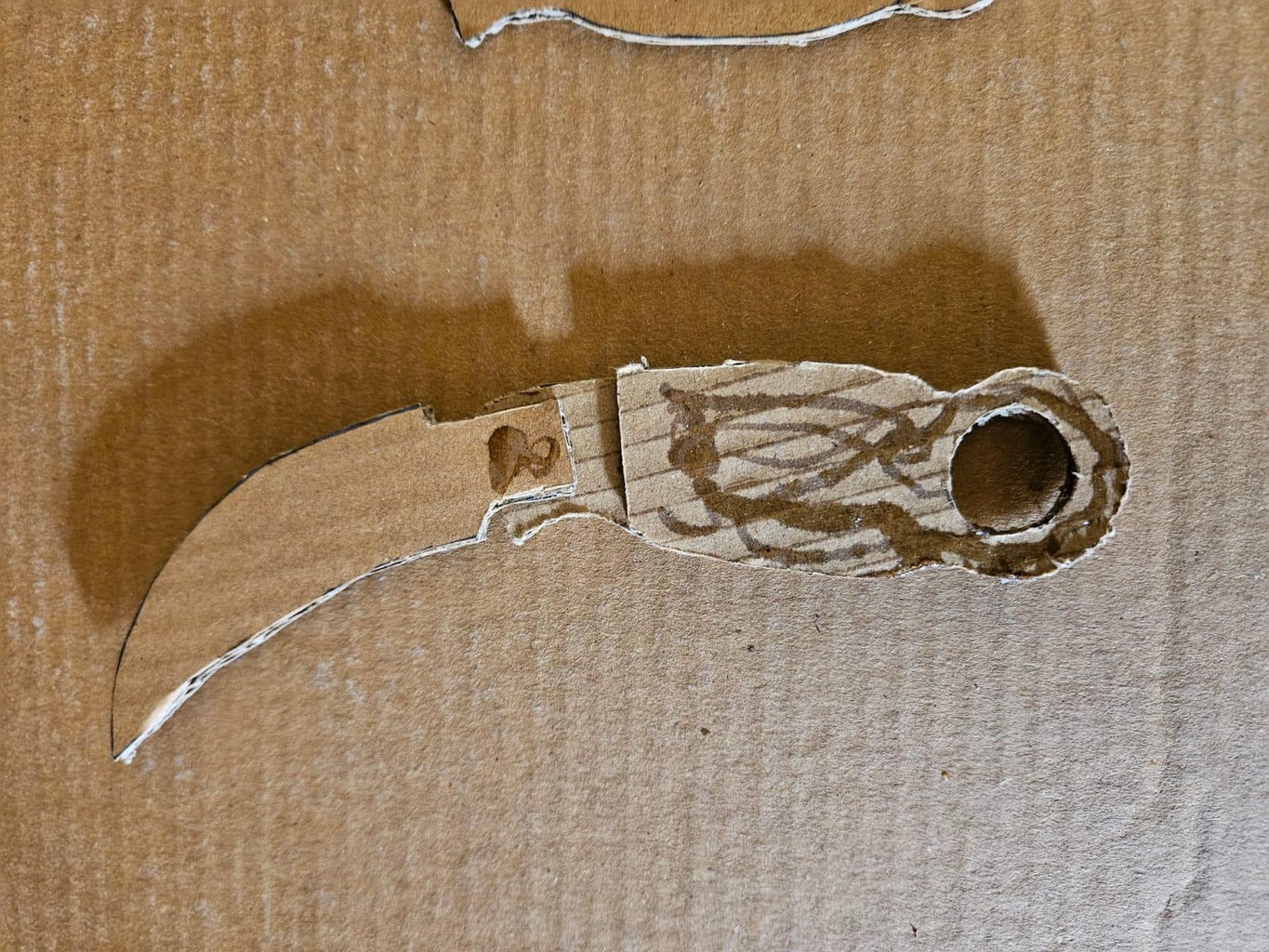How To Make A Karambit Out Of Scissors

The old pair of scissors lay discarded in the junk drawer, their once sharp edges now dull and forgotten. Sunlight streamed through the kitchen window, glinting off the metal, hinting at a potential transformation, a rebirth into something unexpected and potentially quite striking. Could these mundane tools be repurposed into something…more?
This article explores the intriguing, albeit potentially dangerous, trend of crafting a karambit-like blade from ordinary scissors. We'll delve into the process, highlighting safety considerations and offering a balanced perspective on this DIY phenomenon.
The Allure of the Karambit
The karambit, a small, curved knife resembling a claw, originates from West Sumatra, Indonesia. Traditionally an agricultural tool, used for harvesting rice, it has evolved into a popular self-defense weapon, often featured in video games and movies.
Its ergonomic design and reverse grip appeal to many, contributing to its mystique and perceived effectiveness. The distinctive finger ring at the end of the handle allows for secure grip and rapid deployment.
The Scissors-to-Karambit Transformation: A Step-by-Step Overview
The process typically involves disassembling the scissors and reshaping one of the blades. This often requires tools like a metal file, a grinder (if available), and sandpaper for smoothing the edges.
The blade is then carefully filed into the characteristic curved shape of a karambit. This is followed by creating a finger ring, which is often fashioned from a piece of metal or even a portion of the original scissor handle.
Finally, the makeshift karambit is sharpened and polished to achieve a functional, albeit potentially crude, blade.
Safety First: A Critical Consideration
It is absolutely crucial to emphasize the inherent dangers involved in this process. Working with metal tools and sharp edges carries a significant risk of injury.
Proper safety precautions, including wearing safety glasses and gloves, are essential. Rushing the process or lacking the necessary skills can lead to serious cuts and other accidents.
Furthermore, the legality of carrying a homemade blade varies widely depending on local laws. It is the individual's responsibility to be aware of and abide by all applicable regulations.
A Matter of Skill and Responsibility
While the idea of repurposing materials and creating something new can be appealing, crafting a karambit from scissors requires a degree of skill and responsibility. It's important to understand the limitations of a homemade blade and to prioritize safety above all else.
There are legitimate manufacturers who produce high-quality karambits designed for specific purposes, often with a focus on safety and durability. These professionally made tools are a safer alternative for those seeking a functional and reliable blade.
If you are interested in learning more about blade work, consider taking a reputable course taught by qualified instructors. Such courses can provide valuable knowledge about safe handling, maintenance, and applicable laws.
Beyond the Blade: A Reflection on Resourcefulness
The impulse to create and repurpose is a fundamental human trait. While fashioning a karambit from scissors may seem unconventional, it reflects a desire to transform the mundane into something extraordinary.
However, it's essential to channel this creativity responsibly, considering the potential risks and ethical implications. Ultimately, the choice rests with the individual, but it should always be informed by a commitment to safety and a respect for the law.
Perhaps the discarded scissors are better suited for a different transformation, one that aligns with safety and promotes creativity without compromising personal well-being and legal boundaries.


















